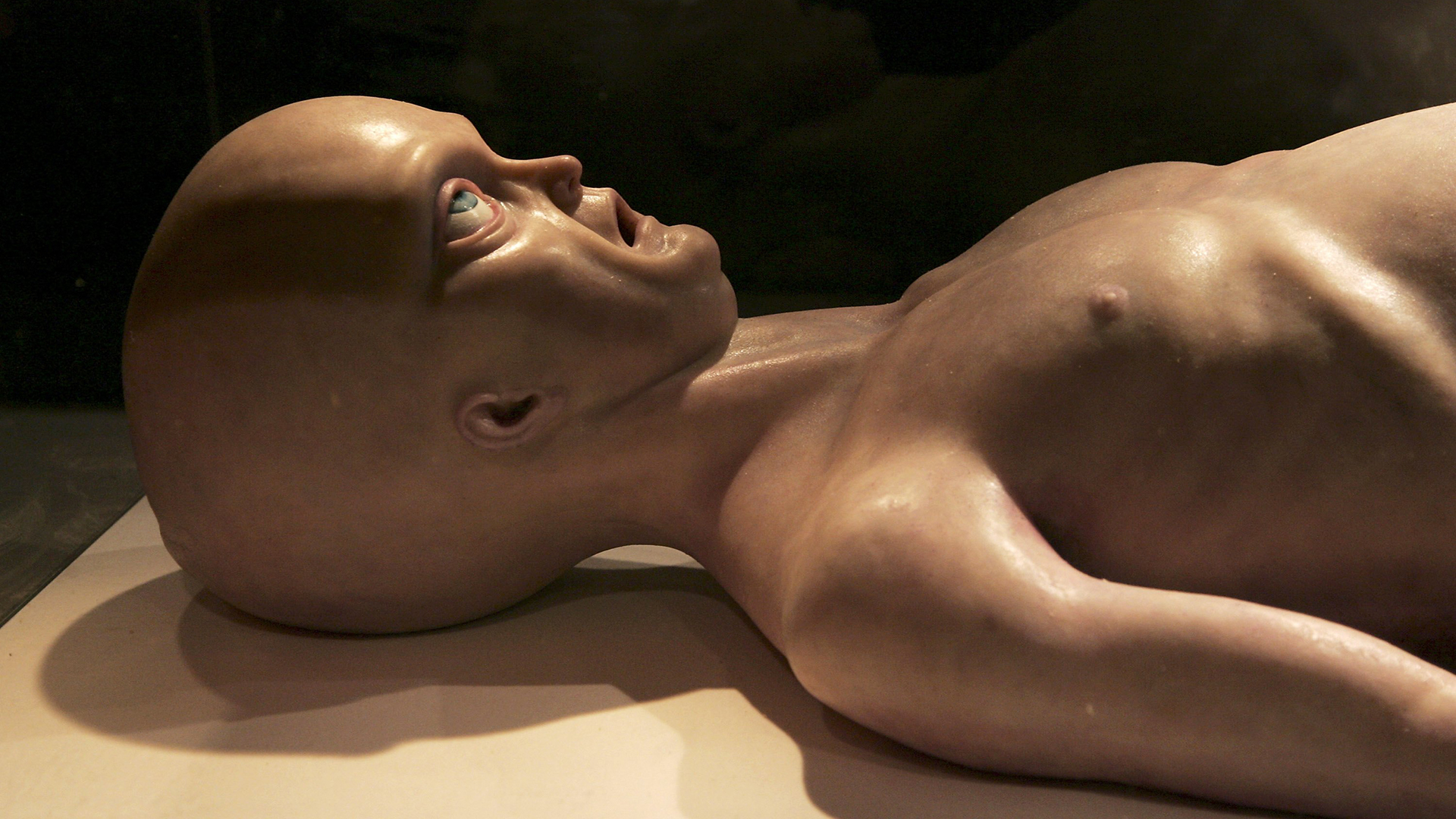The Story Behind the 'Alien Autopsy' Hoax
The reputed creator of a fake ET corpse has publicly confessed.

Britain's Manchester Evening News (April 6, 2006) termed it a hoax that "fooled the world." Well, not exactly: Skeptical Inquirer magazine was on to the 1995 "Alien Autopsy" film from the outset. But now the reputed creator of the fake extraterrestrial corpse used for the "autopsy" has publicly confessed.
The film — purporting to depict the post mortem of an extraterrestrial who died in a UFO crash at Roswell, New Mexico, in 1947 — was part of a "documentary" that aired on the Fox television network. Skeptics and many UFOlogists quickly branded the affair a hoax.
Among numerous observations, they noted that the film bore a bogus, non-military codemark, that the injuries sustained by the extraterrestrial were inconsistent with an air crash, and that the person performing the autopsy held the scissors like a tailor rather than a pathologist (who is trained to place his middle or ring finger in the bottom of the scissors hole and use his forefinger to steady the blades).
Hollywood special effects expert Trey Stokes (whose film credits include "The Blob," "Batman Returns," and "Tales from the Crypt") said that the alien corpse behaved like a dummy, seeming lightweight, "rubbery," and therefore moving unnaturally when handled. (See Joe Nickell, "'Alien Autopsy' Hoax," Skeptical Inquirer, Nov./Dec. 1995, 17–19.)

Belatedly, a Manchester sculptor and special-effects creator, John Humphreys, now claims the Roswell alien was his handiwork, destroyed after the film was made. He made the revelation just as a new movie, "Alien Autopsy," was being released, a film for which he recreated the original creature. As he told the BBC, "Funnily enough, I used exactly the same process as before. You start with the stills from the film, blow them up as large as you can. Then you make an aluminum armature, which you cover in clay, and then add all the detail." The clay model was used to produce a mold that yielded a latex cast.
Humphreys also admitted that in the original autopsy film he had himself played the role of the pathologist, whose identity was concealed by a contamination suit.
The alien-autopsy hoax represented the culmination of several years' worth of rumors, myths, and outright deceptions purporting to prove that saucer wreckage and the remains of its humanoid occupants were stored at a secret facility — e.g., a (nonexistent) "Hangar 18" at Wright Patterson Air Force Base — and that the small corpses were autopsied at that or another site.
Get the world’s most fascinating discoveries delivered straight to your inbox.
Among the hoaxes were the following:
• A 1949 science fiction movie, "The Flying Saucer," purported to contain scenes of a captured spacecraft; an actor actually posed as an FBI agent and swore the claim was true.
• In 1950, writer Frank Scully reported in his book "Behind the Flying Saucers" that the U.S. government possessed no fewer than three Venusian spaceships, together with their humanoid corpses. Scully had been fed the tale by two confidence men who had hoped to sell a petroleum-locating device allegedly based on alien technology.
• In 1974, Robert Spencer Carr began to promote one of the crashes from the Scully book and to claim firsthand knowledge of where the pickled aliens were stored. But as the late claimant's son admitted, Carr was a spinner of yarns who made up the entire story.
• In 1987, the author of a book on Roswell released the notorious "MJ-12 documents" which seemed to prove the crash-retrieval story and a high-level government coverup. Unfortunately document experts readily exposed the papers as inept forgeries.
• In 1990, Gerald Anderson claimed that he and family members had been rock hunting in the New Mexico desert in 1947 when they came upon a crashed saucer with injured aliens among the still-burning wreckage. Anderson released a diary his uncle had purportedly kept that recorded the event. Alas, forensic tests showed that the ink used to write the entries had not been manufactured until 1974.
The most elaborate Roswell hoax, however, and the one that probably reached the largest audience was the "Alien Autopsy" film. It will be remembered as a classic of the genre. The truth about "the Roswell incident" — that the crash device was merely a secret U.S. spy balloon, part of Project Mogul, which attempted to monitor emissions from anticipated Soviet nuclear tests — continues to be obscured by hoaxers, conspiracy cranks, and hustlers.
Joe Nickell is the Senior Research Fellow with the Committee for the Scientific Investigation of Claims of the Paranormal. He investigation the "Alien Autopsy" case for Skeptical Inquirer magazine in 1995.


